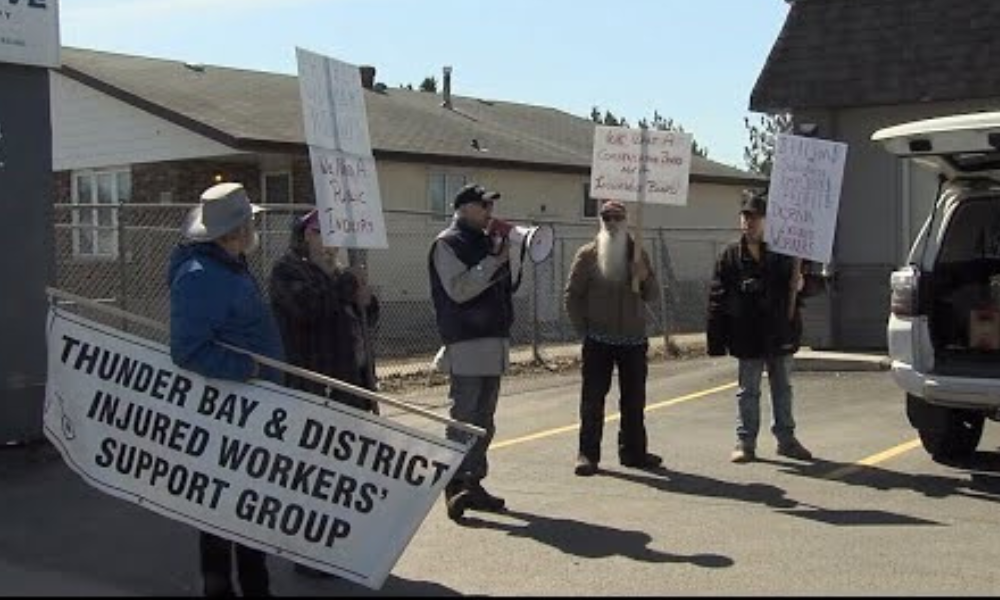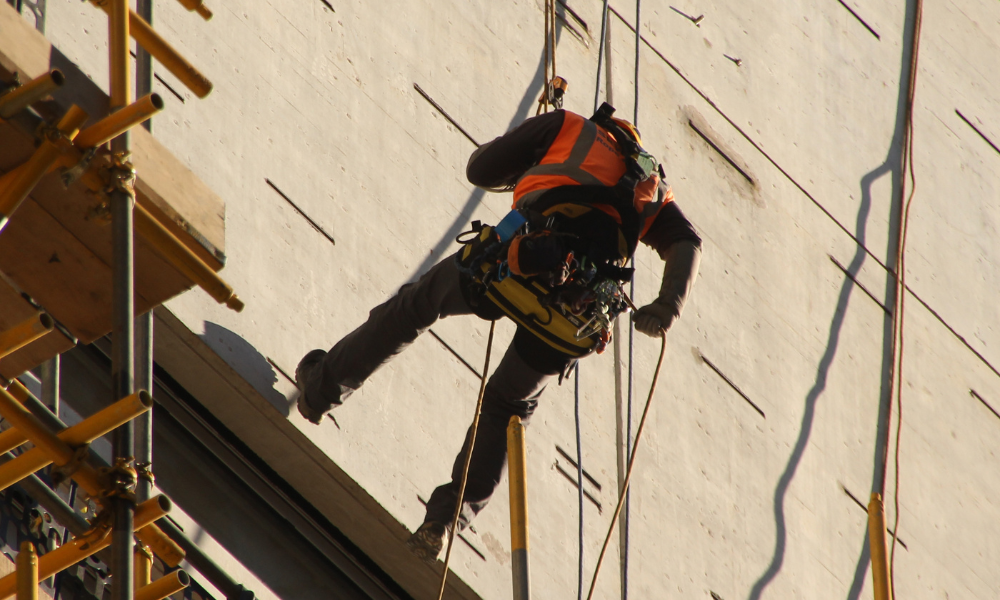“What if, despite taking all reasonable and practical measures in the circumstances of the particular workplace, to prevent an infection, you get that call – you have a COVID case!”

As all employers and workplace managers know by now, the novel coronavirus (COVID-19) is contagious, invisible, and capable of causing significant health effects, which are potentially fatal. Since the virus arrived in Canada in early 2020, employers and managers have been required to implement entirely new and evolving public health measures at workplaces, supported by increasingly detailed information being provided by national and local public health authorities and government (Ministries of Health and Labour), sector-specific safety associations, the Canadian Centre for Occupational Health & Safety, consultants and others.
Screening questionnaires and non-invasive temperature testing are being utilized to keep workers with COVID-like symptoms at home so they do not attend work and potentially infect others. Materials coming into the workplace are being isolated and cleaned, and contactless delivery without signoff has become the norm, to prevent the virus from arriving on packages and work materials. Pandemic policies and procedures for increased hygiene, surface cleaning, preventive measures including masks, and physical distancing, are all intended to further preclude the virus from arriving and infecting persons in the workplace.
Yet what if, despite taking all reasonable and practical measures in the circumstances of the particular workplace, to prevent an infection, you get that call – you have a COVID case! A worker is suddenly ill at work with all of the symptoms and indicators of COVID-19. Or the worker calls (or worse, a series of workers call), saying they are ill with those known key symptoms. The prospect of a case or outbreak, and its economic or reputational impact at this time, particularly as businesses are reopening and being re-established after months of the impact of the pandemic, will be daunting.
Based on our experience to date, available legislation, and public health guidance, we recommend the following step-by-step analysis and process for any report of a workplace COVID-19 case (note that additional steps may be required in a healthcare facility or hospital).
Isolate the Worker Promptly
If the worker is in the workplace, isolate the worker (hopefully at a prearranged medical room or location). If available a mask should be provided to the worker immediately for them to wear, and for any other workers providing direct care (e.g. first aid). Other workers who may have been in close contact with the ill worker should also be immediately isolated.
Public Health and Healthcare Advice Should Be Obtained
In most Canadian jurisdictions, local public health authorities recommend /require that they be contacted when a worker reports being ill with symptoms and indicators of COVID-19. The worker’s own physician should be contacted by the worker, or if the situation appears to be an emergency, medical assistance should be sought promptly. Public health guidance may assist the employer in determining whether it is appropriate to send other workers home, which persons to notify, or even whether to close the workplace temporarily, especially if it appears multiple workers/members of the public/visitors have been impacted. Public health may also require or recommend contact tracing in relation to those who have had “close contact” or other contact with the worker. Before any potential COVID-19 outbreak in the workplace, employers should be maintaining a log of all workers and visitors in the workplace on a given day. This will allow for immediate and accurate contact tracing.
Testing and Test Results
Testing for COVID-19 should be requested to confirm any suspected case of the virus. Symptoms similar to COVID-19 can sometimes be the result of a bad allergic reaction or a serious case of other flu viruses, which do not have the same potential significant consequences. Transport of the worker to obtain medical assistance or to a testing facility should be provided, if possible. It should be emphasized to the worker/testing facility, that testing results are required promptly. The earlier testing results are provided to employers, the faster they can act with certainty to help control/minimize the spread of the virus. Communications, discussed below, should refer to testing being done, timing of expected results, and communications being updated as required, if it turns out a test result for COVID-19 is negative.
Communication
Whether a case of infection is suspected, or if it has been confirmed, a general principle of good workplace and crisis management is communication. Management or human resources/ health and safety should communicate known details promptly. The purpose and scope of communication will depend on the circumstances – to alert customers or clients that a suspected case has been identified and they are being informed at the earliest possible stage; to alert affected workers or visitors/others that they may have been in the workplace or in close contact with the positive case and they may wish to be tested, for example.
Any communication need not, and should not, provide the name of the workerbeing tested/ who is confirmed positive, or names of others being sent home from the workplace. General principles of privacy law and specific Canadian privacy statutes prevent disclosure of specific health information. It is best to communicate privately to those individuals who may have had close contact with the affected worker, and refer generally to the areas in which the worker may have worked or have been present. Reasonable information, to prevent harm, can be disclosed. The extent of disclosure should be sufficient to inform those who may have been exposed, but also protect the privacy of the worker who has or potentially has an illness. These obligations must be carefully balanced.
Employers should be aware that it is the policy of many provincial health officers to publicly identify the location of any COVID-19 outbreak, which includes identifying the name and physical location of the workplace. Even if an employer has taken all appropriate measures to limit the transmission of COVID-19 in the workplace, they should be prepared for negative media, customer and public attention due to the stigma associated with a COVID-19 outbreak. Those employers with internal or external public relations experts should plan to utilize them.
Prompt communication to workers and affected parties, provision of honest and direct information, and communication respecting immediate measures being taken, can significantly lessen the negative publicity and damage to reputation associated with a publicized case or outbreak.
Reporting to OHS/Workers Compensation
Generally, across Canada, no requirement exists to report a “positive COVID-19 test” to OHS or workers compensation authorities, unless it is clear that the infection arose from an exposure at the workplace.
If the infection clearly or arguably arose from an exposure at the workplace, it may be reportable. For example, if there have been other positive cases, or if a significant COVID-19 outbreak has occurred at the workplace, it will be difficult for the employer to suggest the case did not arise out of the workplace. In many jurisdictions health care or illness arising from an exposure at the workplace must be reported to Workers Compensation, and once that has been done, it must also be reported to OHS authorities, joint health and safety committee, trade union.
OHS and Workers’ Compensation reporting obligations in the applicable jurisdiction should be consulted carefully for reporting obligations. Proposed amendments to Workers’ Compensation legislation to create a presumption of workplace infection in certain industries and circumstances have been made, in BC and Ontario, but are not yet law.
In addition, in some jurisdictions, such as British Columbia, an employer is required to have developed and implemented a COVID-19 Safety Plan before reopening. In the event of a COVID-19 outbreak in the workplace, regulators will likely be asking for copies of that plan and evidence its requirements were actually implemented.
Should We Shut Down All or Part of the Workplace?
Shutting down all or part of the workplace ought to be considered carefully, depending on all of the circumstances. A decision to shut down a workplace pending confirmation of a positive test, may be premature, but in our view should be the subject of advice from local public health authorities. Upon confirmation of a positive case, an assessment of the number and frequency of contacts, and other circumstances should occur promptly. Amongst questions to be asked:
- When did the worker last attend at the workplace? (If there has been some significant passage of time since the last shift or the worker regularly works at home, the timing of contact with workers or objects in the workplace may be determinative);
- Does the worker work in a crew? (If so, all crew members may have been exposed and may need to be sent home to self-isolate along with the ill worker);
- Does the worker and other workers in close proximity to him or her work in specific area separate from others in the workplace? (It may be possible to identify that group and send them home along with the ill worker to self isolate);
- Is it possible an entire worksite, such as an office, has had exposure due to working closely together and contact with the ill worker with physical work product or objects?
- What engineering, administrative and cleaning controls are in place at the workplace that may have reduced the risk of transmission to other workers?
- Was the worker wearing protective equipment as recommended or required? (This bears on the assessment of potential for exposure);
- Can any area identified as having been accessed by the worker be cleaned promptly and thoroughly to permit continued operations?
OHS regulators may attend at the workplace (physically or by phone), and make the decision on shut down for you. OHS may attend after any report of a workplace-related exposure, work refusal, or due to a worker complaint.
Communication with OHS regulators respecting the employer’s assessment of all the above factors, as well as providing relevant written pandemic processes, and protective measures being taken, is important in determining whether a stop work order may be issued, and a shutdown is necessary, pending additional measures.
While it is hoped that most employers and managers will not receive a call reporting a positive case of COVID-19, the above steps can guide a successful employer response, to minimize business, reputational and health impacts, to the extent possible.
For immediate advice and assistance should a COVID-19 case be reported, please contact any member of Mathews Dinsdale’s national OHS and Workers’ Compensation practice group, or refer to the Firm’s COVID-19 website resources.
Co-authors: Natasha Jategaonkar Deanah I. Shelly and Paul D. McLean.
Article originally appeared on Mathews Dinsdale’s website.






